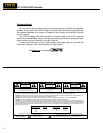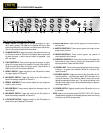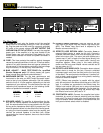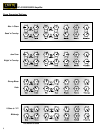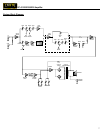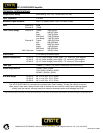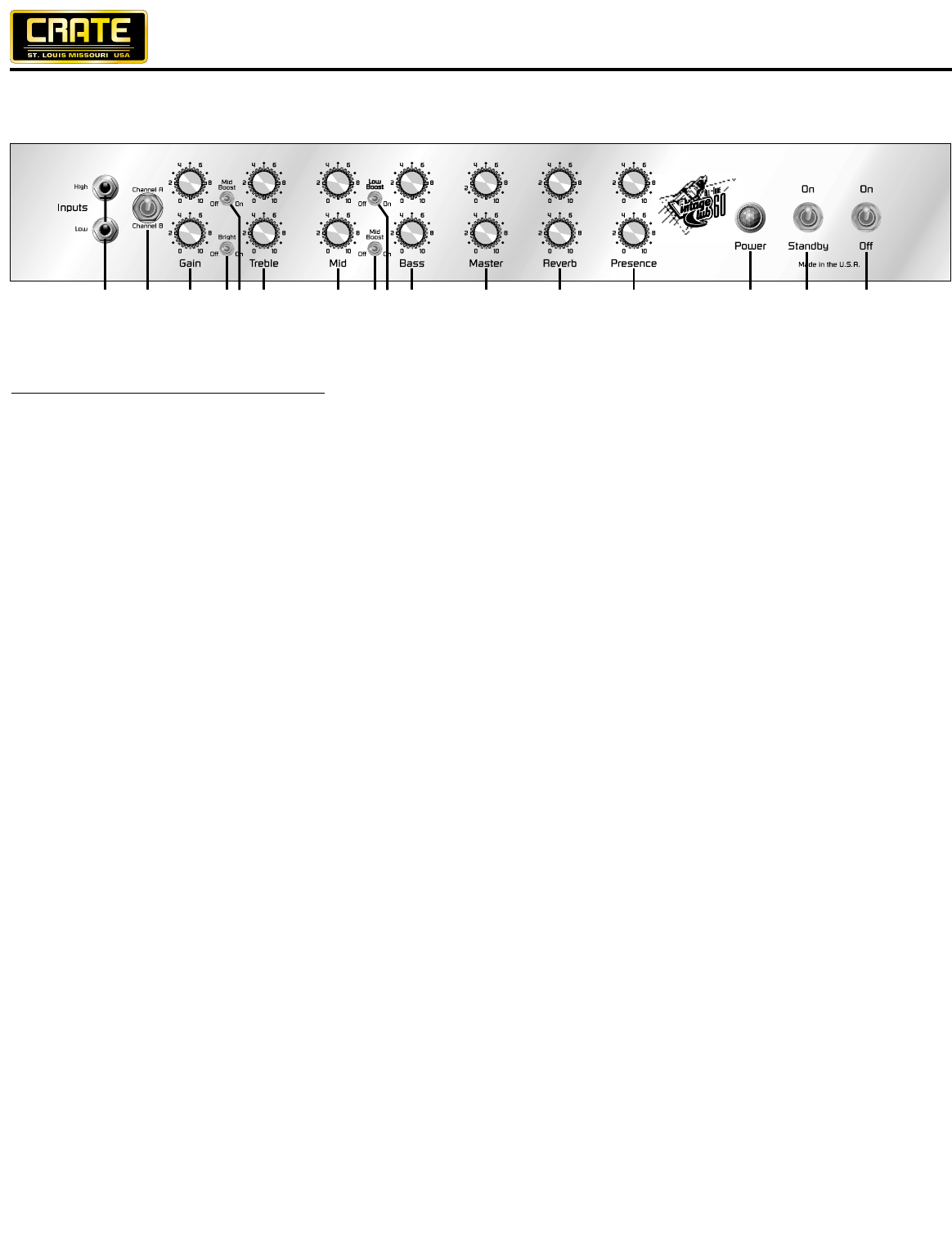
4
The Front Panel Controls and Their Use:
1. INPUT JACKS: The High input is a direct connection for “stan-
dard” electric guitars. The Low input is padded 6dB and is best
suited for guitars with “hot” pickups or on-board active electronics.
(Use a high quality shielded instrument cable.)
2. CHANNEL SWITCH: Toggle this switch to the desired channel: up
for Channel A, down for Channel B. A footswitch also may be used
to select channels, in which case this switch is bypassed – see
#25, rear panel.
3. GAIN CONTROLS: These controls govern the amount of signal
going to the output stage of the amplifier. Channel A Gain offers a
range of sounds from clean to a bluesy crunch; Channel B from a
slight crunch to full tilt screaming distortion.
4. BRIGHT SWITCH: Toggle this switch to the ON position to boost
the upper register of Channel B.
5. MID BOOST SWITCH: Toggle this switch to the ON position to
boost the midrange response of Channel A.
6. TREBLE CONTROLS: These controls adjust the high frequency
levels for each channel.
7. MID CONTROLS: These controls adjust the midrange levels for
each channel.
8. MID BOOST SWITCH: Toggle this switch to the ON position to
boost the midrange response of Channel B.
9. LOW BOOST SWITCH: Toggle this switch to the ON position to
boost the low end response of Channel A.
10. BASS CONTROLS: These controls adjust the low end levels for
each channel.
11. MASTER CONTROLS: These controls govern the output volume
levels of each channel.
12. REVERB CONTROLS: These controls govern the amount of
reverb applied to each channel.
13. PRESENCE CONTROLS: These controls govern the upper-high
frequencies for each channel, allowing an enhancement to the
sound beyond the Treble and Mid controls.
14. POWER LAMP: This dual color jewel lamp glows when the amp is
turned on – an amber color indicates Channel A, a red color indi-
cates Channel B.
15. STANDBY SWITCH: Toggle this switch to the ON position to acti-
vate the amplifier – once the power switch (#16) has been on for
at least 30 seconds. (This allows the tubes to come up to a safe
operating temperature before use.) The amp should be set in the
Standby mode (switch down) during extended breaks to help pro-
mote longer tube life.
16. POWER SWITCH: Toggle this switch to the ON position to turn on
the amplifier.
NOTE: Always turn the power switch ON FIRST, OFF LAST. Use the
Standby switch (toggled to the Standby position) when first turning
the amp on as well as during breaks.
1 2 3 64 5 7 10 141311 12 15 168 9
VC-6112/6210/6212 Amplifier




